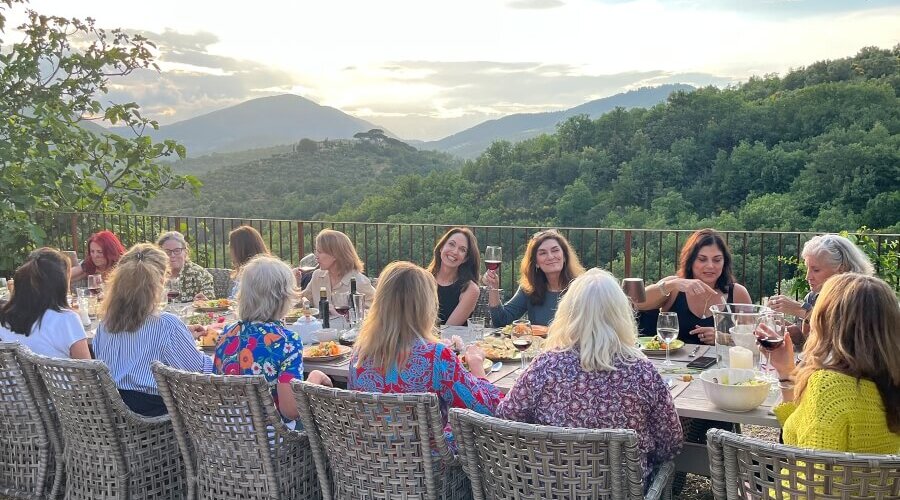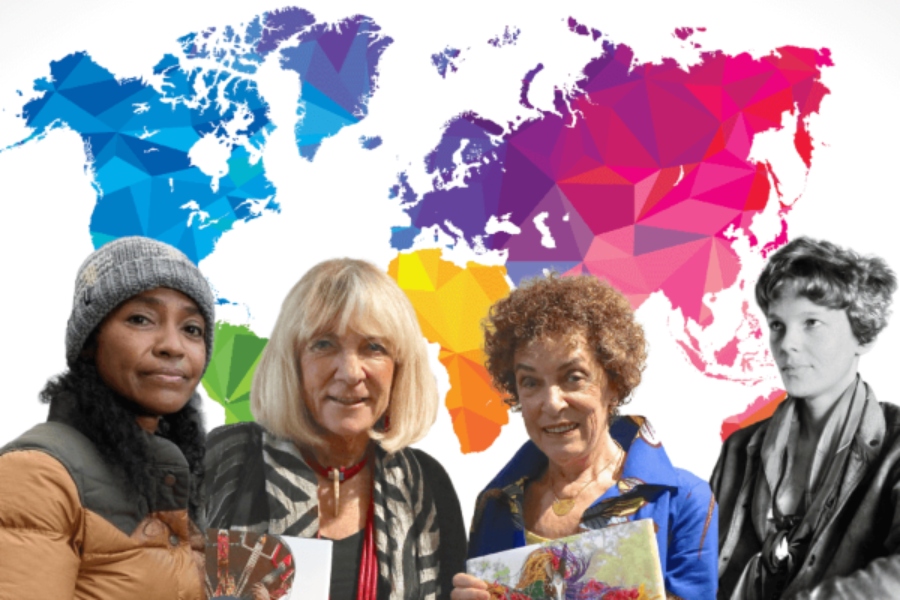It started with a close encounter with a giraffe. More than 20 years ago, photographer Nine Francois was compelled to capture the image of a towering ungulate at an exotics farm in rural Texas, which led to an extended passion for photographing animals. She has photographed scores of amazing creatures—from tigers to wolves to caimans—and in the process has been charged, head-butted, and spit upon by them. But Nine has persisted, getting “ridiculously close” to wild animals, often times putting herself in danger, because she is determined to make us feel the awe she feels when she is shooting them.
“I’m trying to convey the formidable presence of these animals that I felt when taking their pictures,” she explains. Her portraits convey a personality, a spirit, that can be amusing, moving or surprising—or all three at once.
Francois is based in Austin, but she photographs animals wherever she can get access. “I can’t work on this project continuously due to the travel involved (I still have two kids at home), but I do try to take one trip every year where there might be an opportunity to photograph a new animal,” she says. If you have leads on animals she could photograph, you can get in touch with her via her website, ninefrancois.com. While you’re there, make sure to check out even more amazing photos of her animals.
1. Why did you want to focus on animals and why did you choose this particular style (the close ups)?

Francois out in the wild with a handsome moose.
The development of the Animalia series started back in 1998 when I was driving the backroads of Texas and saw a giraffe hanging over the fence of a bed and breakfast near Wimberley. I was captivated and had to stop, of course, to take a picture. I met the owner, Mrs. Glass, who amazingly agreed to let me come back to photograph her menagerie of exotic creatures. I was so excited when I returned that I forgot to be scared of these big animals, some of which could do real harm, like the ostriches who could split your chest with one of their powerful forward kicks.
I see now that my not displaying fear is probably what allowed me to get close to these animals.
In retrospect, I see now that my not displaying fear is probably what allowed me to get close to these animals to get the perspective and the compositions that I wanted. The giraffe on my website is the first real image I made that day, and I was immediately hooked on the idea of photographing other large animals. It turns out there a lot of exotics in the area, but getting access to them was the tricky part.
2. What are the logistical challenges an animal photographer needs to work around to make these photos?

One of the most difficult aspects of producing the Animalia series is just finding the animals, and then convincing the owners to let me get so ridiculously close to these creatures without any kind of protective barrier between us. It’s all about building trust—with the owners, with the animals—that sometimes can take months, even years, before getting permission to photograph. At other times, it’s as spontaneous as stopping by a tiger reserve in Thailand on the way to the train station and asking the clerk behind the desk if I could please enter the tiger pen to take pictures. Who knew this would actually work?!
There are also technological factors to creating the Animalia series that need to be worked out. I now use a Hasselblad—a slow, bulky, film-based camera that is noisy and left-to-right reversed. These attributes are not well suited for photographing large, skittish mammals.
I once asked a clerk at a zoo in Thailand if I could enter the tiger pen to take pictures. Who knew this could actually work?
Once I was walking while looking through the viewfinder and thought I was moving away from a camel when in reality I was moving towards it. Ultimately, I bumped into it, which was confusing for the critter, who expressed his dismay by doing what camels do. He spit. While I wasn’t thrilled about this, I reminded myself that it could have been much worse had I bumped into a bear or a lion.
When I’m not running into an animal I’m trying to photograph, I’m usually trying to coax it to stay in place long enough to take its picture. I get low and still, and then I start to hum in a low monotone. I’m attempting to lull the creature into a peaceful state and eventually acclimate it to the forthcoming sound of the shutter click. Sometimes I get my subject just right in the frame, most times not. Unlike with digital media, I won’t know til I get home to develop the roll. It’s just as thrilling these days to look at the negatives to see what I “captured” as it was the very first time I developed a roll of film!
3. Some look like REALLY wild animals—like a bear and a wolf. Were you ever in danger?

I’m always in danger with the large animals but sometimes more so than others. I’m very close to these animals when I photograph them and am frequently crouched low to the ground so I can shoot up against the sky (this is what produces appearance of a white backdrop). I try to always have one person with me who can watch my back so there won’t be any surprises, but there’s no denying that I’m exposed.
Although I find my subjects in reserves, parks, and sometimes zoos, where they are in frequent proximity to humans, it would be a mistake to think that means they are tame. These animals, even the seemingly peaceful ones, like the ram who head-butted me into a mud puddle, are always wild creatures who can resort to their wilderness instincts in a flash of a second.
When the mama yak started to charge, I weirdly ran towards her—my survival skills clearly kicking in.
Recently, I had a stand-off with a mama yak who all of a sudden decided she and her calf had had enough of my presence. She assumed an aggressive position, I quickly got up, we stared at each other in a terrible game of chicken, and she started to charge. Weirdly, I ran towards her (my survival instincts clearly kicking in) and then we simultaneously stopped—I think we both surprised ourselves and somewhere in that limbic fight or flight moment, we realized we could just stop and cautiously walk away. I had a hard time believing I actually charged the yak—had I turned to run, she would easily have plowed me down. I guess these animals aren’t the only ones who can resort to survival instincts.
4. What do you want the viewer to feel or think when they look at the photos?

My intent is for these images to work on two levels. I want to present the animal as an archetype so the viewer can not only experience the power, grace, and beauty of its form, but also to contemplate from a philosophical viewpoint the role and meaning of animals in the context of our lives.
Perhaps looking close up into the eyes of a cougar or of a black bear recalls in us long ago animal encounters that are still registered in our DNA.
I also want viewers to have an intimate, visceral connection with these individual critters. It’s clear that we humans have a fascination and deep emotional bond with animals—there is all kinds of research out there that speaks to this—which is repeatedly substantiated by the flood of memories and stories that people share with me when looking at these photographs.
Interestingly, so many of these stories are connected to childhood, and people remember with great emotion (not always happy) some incident or instant when they were acutely present in the presence of an animal. Perhaps looking close up into the eyes of a cougar or of a black bear recalls in us long ago animal encounters that are still registered in our DNA.






















0 Comments